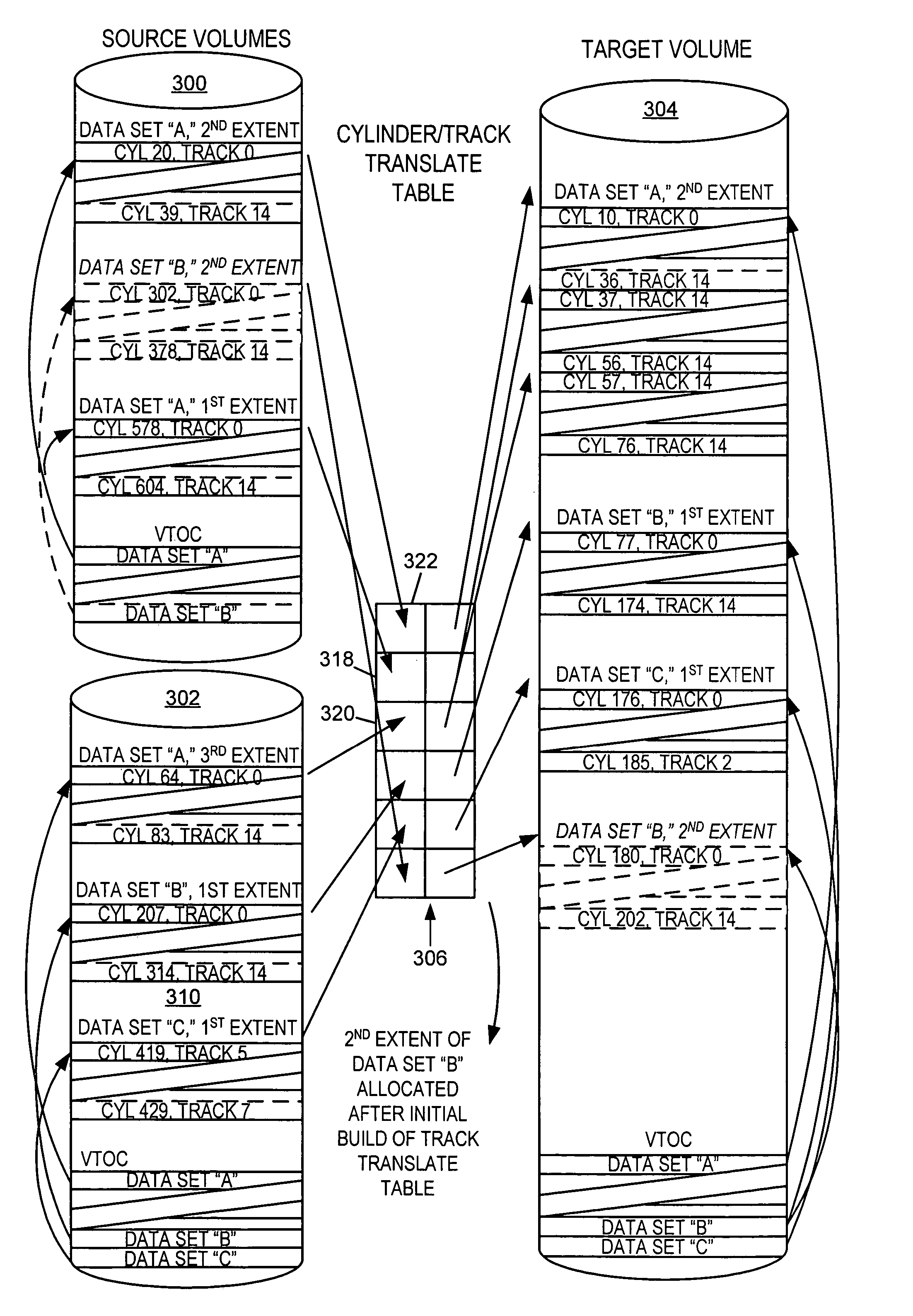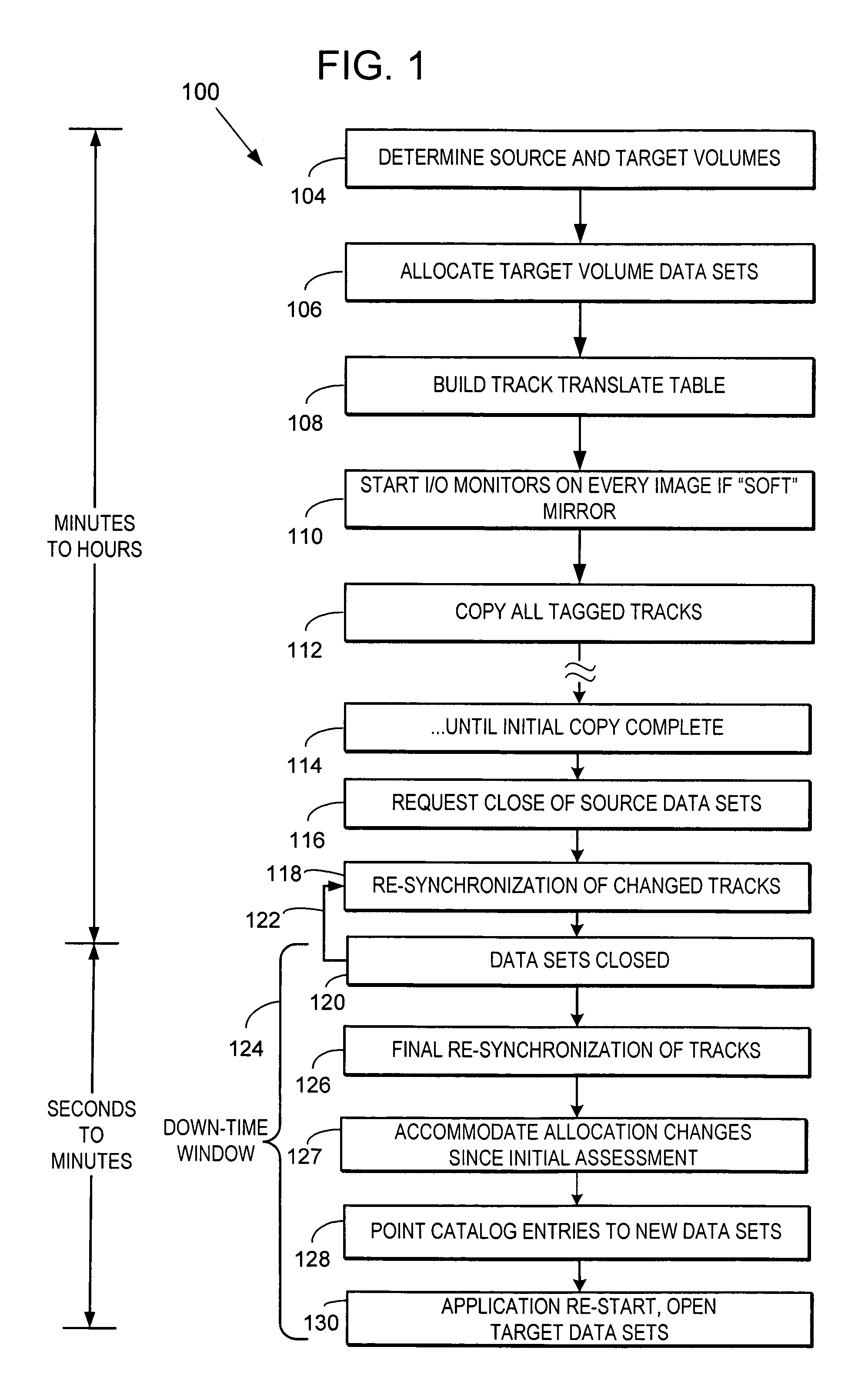Data set level mirroring to accomplish a volume merge/migrate in a digital data storage system
a data set and storage system technology, applied in the field of digital data storage, can solve problems such as difficult application expansion, complicated copying and/or re-allocation of data sets to address these problems, and difficult expansion of applications
- Summary
- Abstract
- Description
- Claims
- Application Information
AI Technical Summary
Problems solved by technology
Method used
Image
Examples
Embodiment Construction
[0050]To satisfy the primary object of minimizing application down-time for a volume merge or combining of data set extents, while still complying with the various constraints and requirements mentioned above, we have determined that embodiments of the invention preferably include the following characteristics or features:[0051]a) allocation of initial target data set extents outside the down-time window[0052]b) initial copying of tracks outside the down-time window[0053]c) accommodating extents allocated after the initial mirror is established[0054]d) accommodating data sets desired in the merge / migrate but allocated after the initiation of the process[0055]e) accommodating data sets initially included but deleted or renamed during the process[0056]f) fast cataloging of target data sets
[0057]For some embodiments, it may be useful to add and monitor additional volumes after the initiation of the process, which could occur from data sets extending into volumes not initially included,...
PUM
 Login to View More
Login to View More Abstract
Description
Claims
Application Information
 Login to View More
Login to View More - R&D
- Intellectual Property
- Life Sciences
- Materials
- Tech Scout
- Unparalleled Data Quality
- Higher Quality Content
- 60% Fewer Hallucinations
Browse by: Latest US Patents, China's latest patents, Technical Efficacy Thesaurus, Application Domain, Technology Topic, Popular Technical Reports.
© 2025 PatSnap. All rights reserved.Legal|Privacy policy|Modern Slavery Act Transparency Statement|Sitemap|About US| Contact US: help@patsnap.com



